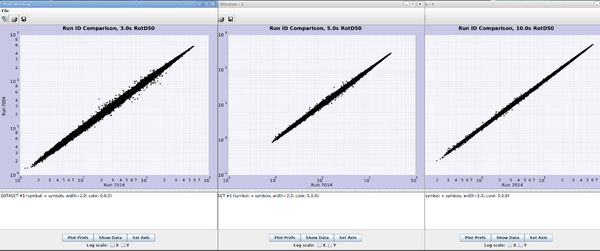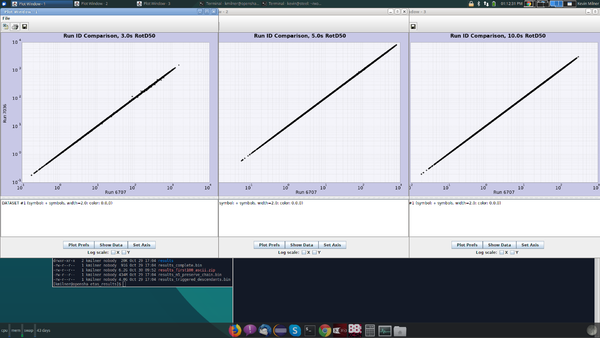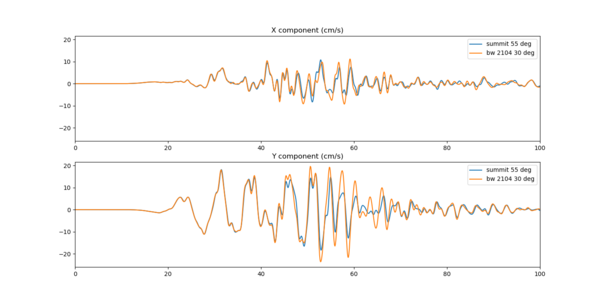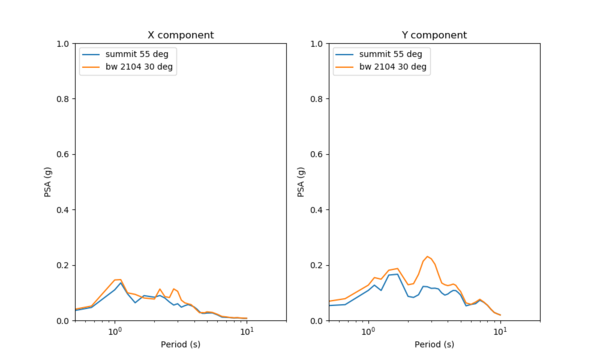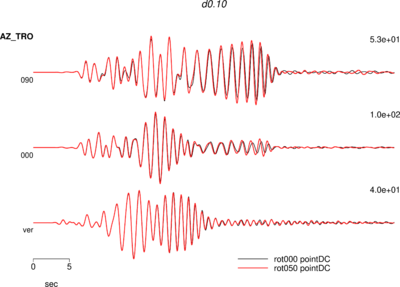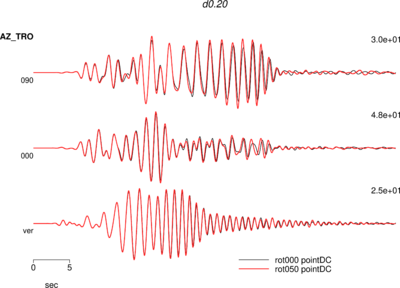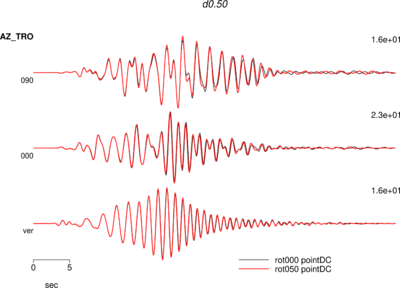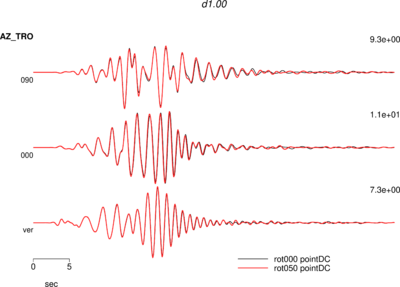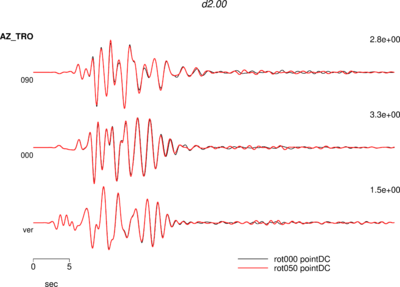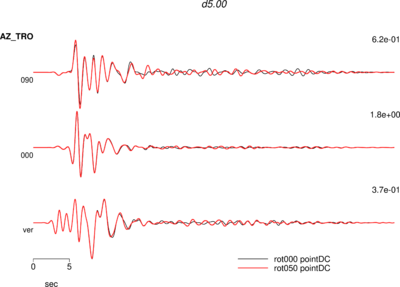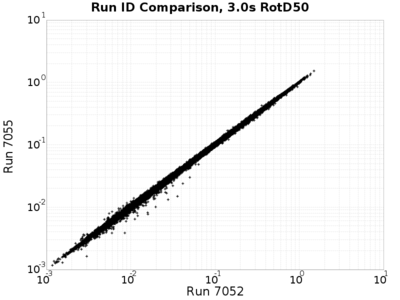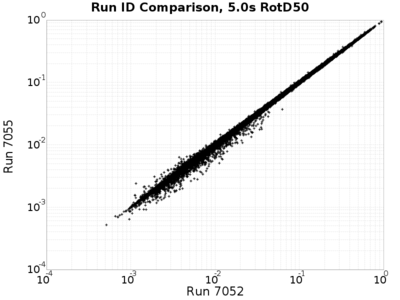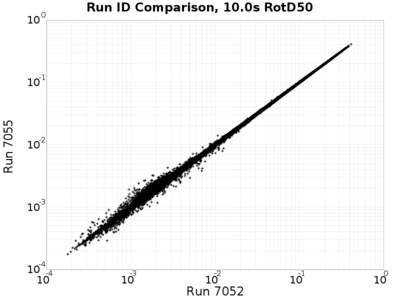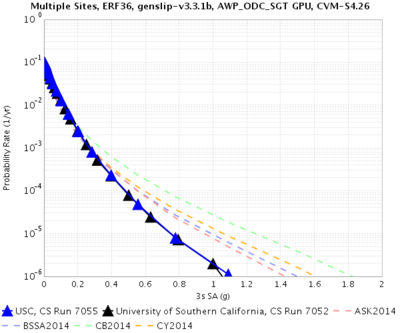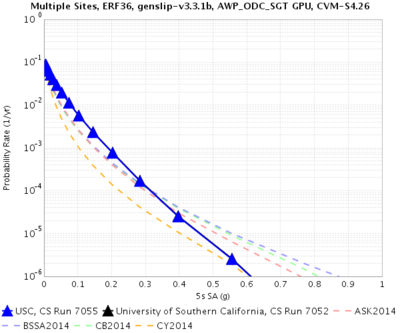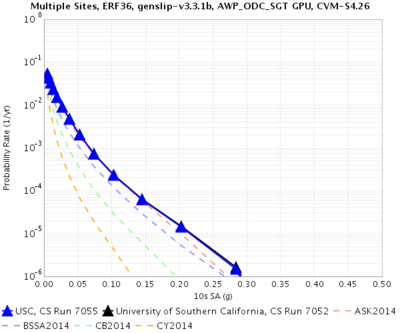CyberShake volume rotation
This page documents the differences we see in results when using volumes with different rotation angles, and the investigation of these differences.
Contents
Problem description
When attempting to replicate on Summit results for site USC using ERF 51 (an RSQSim-based ERF) originally obtained on Blue Waters, we ran into some difficulty.
The plot below shows a comparison of RotD values obtained on Summit (Run ID 7054) vs on Blue Waters (Run ID 7014). As you can see, there is a general trend but more scatter than anticipated; the two results should match almost exactly.
As a point of comparison, here are the same plots for the USC ERF 36 verification runs:
In particular, we identified source 684, rupture 323 as an event to investigate further. At a frequency of 3 seconds, the values obtained on Blue Waters were almost twice as big as those on Summit, 0.23 cm/s2 vs 0.12 cm/s2.
Below are plots comparing the seismograms and the geometric mean PSA values for these events on the two systems. The seismograms start to diverge after about 45 sec, and the geometric mean PSA values show the largest difference at about 3 sec.
Rotation angle
After running a series of tests, we identified that the difference seems to be related to the rotation angle: the smaller values are produced when running with a rotation angle of -55 degrees (what we have used in the past for southern California sites), and the larger values with a rotation of -30 degrees. Neither the site nor this source are near the volume boundaries.
Study 18.8 vs Study 17.3 comparison
Below are Rotd comparison plots for sites s845 and s835, hard rock sites which were included in both studies.
1D test
Rob Graves ran a 1D test in which seismograms were computed about 16 km from the source for rotation angles of 0 and -50 degrees. Below are plots comparing the three components at a variety of depths.
| depth | seismograms |
|---|---|
| 100m | |
| 200m | |
| 500m | |
| 1km | |
| 2km | |
| 5km |
ERF 36 (UCERF2, 200m spacing) test
We ran site USC using CVM-S4.26 with -30 degree rotation, and compared the results to the 'standard' Southern California rotation of -55 degrees.
Overall, the differences get smaller as the ground motions get larger, and the hazard curves are visually identical, suggesting that the rotation angle has a negligible effect on hazard for UCERF2 simulations.
| 3 sec | 5 sec | 10 sec | |
|---|---|---|---|
| RotD comparisons | |||
| Hazard curves |
Note that the dropoff off the black curve in the 3 sec plot after 1 g is due to the fact that the black and blue curves are sampled at different X-values.
